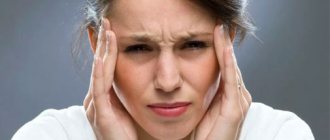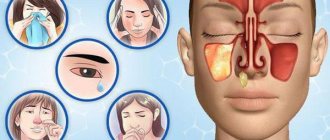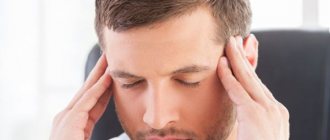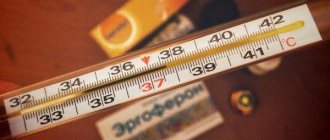Quite a significant number of people from time to time face such a problem as a feeling of pressure in the ears. According to some sources, at least 20-30% of the world's population has experienced this sensation at least once for no apparent reason. Anyone can experience this pain syndrome - the likelihood of its occurrence practically does not depend on age or gender, nor on social status or financial condition.
If we do not take into account the natural cases of the occurrence of this pressure - when flying on an airplane, diving to great depths, sudden rises to altitude, and so on, then the occurrence of this symptom is a sign of a person’s existing health problems. It is worth noting that the occurrence of pressure in the ear does not mean at all that the problem is associated with this organ - simply all the systems of our body are interconnected and the symptom of the disease can manifest itself in this way.
Isolated cases of feeling pressure in the ears may not be a sign of pathology, but they should not be completely ignored either. If you experience these sensations regularly, and are also accompanied by other alarming symptoms (head pain, nosebleeds, dizziness, nausea, weakness, etc.), then delaying a visit to the doctor is simply unacceptable. A combination of several symptoms or multiple repetitions of one - these cases undoubtedly require examination and an accurate diagnosis.
Symptoms
When visiting a doctor about pressure in the ears, some patients mention other symptoms accompanying this sensation:
- dizziness;
- ear congestion;
- associated pressure in the head;
- various noises of varying degrees of volume (ringing, clicking, hum, etc.);
- acoasmas (auditory non-speech hallucinations);
- nausea and headaches;
- increased sensitivity to sounds or light.
The presence of these additional symptoms gives the doctor reason to suspect a serious illness and suggest that the patient undergo a comprehensive examination. An otolaryngologist can also offer consultations with other specialists, since the alleged ailments may not be within his competence.
What diseases cause noise in the head?
There are a huge number of causes of noise in the head and ears. It can occur due to severe fatigue, insomnia, neurosis, stress, after excessive physical exertion, against the background of increased body temperature, taking medications, as well as illnesses and traumatic brain injuries.
At risk of developing tinnitus are city transport drivers, factory and airport workers, and musicians.
What causes noise in the head? It can become a symptom of the following diseases:
- neuritis of the auditory nerve, Meniere's disease, otosclerosis, sensorineural hearing loss, otitis, labyrinthitis and other pathologies of the auditory analyzer;
- cervical osteochondrosis;
- brain tumors;
- atherosclerosis, arterial hypertension, stroke, heart failure, arrhythmia, vegetative-vascular dystonia, as well as other heart and vascular diseases that lead to deterioration of cerebral circulation;
- mental disorders;
- endocrine diseases.
Tinnitus or ringing in the ears and head, according to statistics, is felt by about 10-15% of the world's population. The frequency of its occurrence increases with age, as the likelihood of developing vascular and other diseases increases.
Let's take a closer look at what causes noise in the ears and head.
Migraine
The main symptom of a migraine is a severe headache that affects one side of the head. In addition to this, the patient experiences visual disturbances and ringing in the ears.
Cervical osteochondrosis
The appearance of tinnitus and buzzing in the head, dizziness, headaches that pulsate in the temporal or occipital region may be associated with compression of the blood vessels in the neck and impaired circulation of the auditory analyzer, which occurs with cervical osteochondrosis.
Vascular diseases
The cause of severe noise in the head and throbbing headache can be an aneurysm or thrombosis of cerebral vessels. These are life-threatening pathologies that cause stroke and intracranial hemorrhage.
High pressure
The appearance of noise in the head due to increased pressure is associated with excessive filling of blood vessels. Other signs of hypertension include headache, dizziness, shortness of breath, and nausea. With strong surges in pressure, a feeling of tingling in the heart area, swelling in the temples and fog in the head appears, vision deteriorates, spots appear before the eyes, and the person may lose consciousness. In this case, you need to urgently call an ambulance.
In case of a hypertensive crisis, a person needs emergency medical care
Arterial hypertension is often accompanied by impaired cerebral circulation, which causes a buzzing in the head to occur on a constant basis. If your blood pressure fluctuates frequently, you need to undergo comprehensive treatment. Otherwise, hypertension can cause a heart attack or stroke, which can be life-threatening.
Intracranial pressure
The occurrence of a headache and noise in the head in an adult in the morning, after getting out of bed, is a sure sign of increased intracranial pressure. Other characteristic symptoms of the disease:
- nausea;
- vegetative-vascular dystonia;
- fatigue, lethargy, decreased mental activity;
- irritability;
- dark circles under the eyes;
- hearing impairment;
- increased sweating;
- disturbance of consciousness from stupor to coma (in severe cases).
Headache with increased intracranial pressure is bursting. It gets worse when lying down, coughing or sneezing. During the day, when the person is in an upright position, the symptoms gradually subside as the pressure decreases.
Atherosclerosis
Pathologies of the blood vessels of the brain often lead to throbbing headaches and noise in the head. The most common cause is atherosclerosis. Due to the accumulation of cholesterol plaques on the walls of blood vessels, their elasticity decreases. As a result, blood circulation is disrupted, a buzzing sensation appears in the head, and the patient hears something pulsating in the temples.
With age, there is a natural wear and tear of the blood vessels of the brain and a decrease in the elasticity of their walls.
Pulsating noise occurs due to atherosclerotic narrowing, spasm of blood vessels. It is a sign of blood passing through a narrowed artery.
Thyroid problems
Endocrine disorders can negatively affect hearing. Noise or ringing in the head or ears is a symptom of hypothyroidism, hyperthyroidism. Associated signs of thyroid disease: drowsiness or insomnia, weight gain or loss, nervousness, irritability, forgetfulness, increased heart rate.
Other diseases
The appearance of noise in the head and ringing in the ears is most often associated with vascular diseases. If it is accompanied by a feeling of pressure, fullness in the head, severe headache and dizziness, balance disorders, then you should be examined for the presence of tumor processes.
Often, noise in the ears and head is a sign of diseases and injuries to the auditory analyzer. The main reasons include:
- acute or chronic otitis – inflammation of the middle ear;
- sensorineural hearing loss – hearing loss caused by damage to various parts of the auditory analyzer;
- labyrinthitis – inflammation of the inner ear;
- neuritis of the auditory nerve - accompanied by a violation of the transmission of impulses from the labyrinth to the brain;
- otosclerosis – manifested by impaired mobility of the auditory ossicles in the middle ear;
- Meniere's disease - increased fluid pressure in the inner ear;
- damage to the eardrum;
- Acoustic neuroma is a benign neoplasm;
- age-related deafness.
In addition to ringing or humming, there is a feeling of stuffiness, fullness inside the ear, hearing problems, disturbances of the vestibular system, which include dizziness, nausea, and balance disorders.
The appearance of noise in the head and other sounds is sometimes associated with depression, neurasthenia and other disorders of the central nervous system. Diagnosis of these causes is difficult, since organic disorders cannot be detected during the examination.
Less commonly, noise in the head occurs due to multiple sclerosis, diabetes, kidney disease, and anemia.
Causes
Pressure in the ears occurs due to a number of factors and ailments. These may include serious illnesses and completely harmless ones, for example, prolonged listening to music at high volumes in headphones. The most common causes of pressure in the ears are:
- otosclerosis (bone growth) and inflammation in the middle ear;
- pathologies of a neurological nature (cervical osteochondrosis, pinched vertebrae)
- atherosclerosis of blood vessels in the brain;
- high/low blood pressure of various etiologies (obesity, alcohol and tobacco abuse, depression, stress, heart problems, physical exercise, vascular disorders, etc.);
- injuries of the skull, head;
- tumor (acoustic neuroma) of the auditory nerve;
- otitis, sinusitis, rhinitis, earwax, aerootitis;
- everyday (natural) reasons - long telephone conversations, sleep disturbances, prolonged listening to music, overwork, sudden changes in atmospheric pressure, water getting into the ears, flying on an airplane, diving, etc.
Symptoms of headache with vegetative-vascular dystonia
The symptoms of vascular headaches are very diverse, but the main difference from other types of pain is less intensity, rather “background” pain, but painful attacks, for example, migraines, can also occur.
- Headache with VSD accompanies a person constantly with varying intensity. She goes away during sleep, but returns within the first minutes after waking up. Due to the “background” course of pain, it often begins to be perceived as a normal condition. But if you ask such a patient if he has a headache, he will always answer “yes.”
- The pain with VSD is “dull.” It can be squeezing, bursting, pulsating, etc. Its intensity is low (except for attacks, which are also “dull”, although strong), therefore, if the patient complains of acute pain, this most likely will not be VSD.
- A constant headache slightly disrupts the perception of reality: sounds may seem muffled, the movements of the surrounding world are inhibited and excessively smooth. This condition can be dangerous for a person, as he may inadequately assess the situation and, for example, get hit by a car.
- Vascular headache is often accompanied by other vegetative manifestations and neurological conditions: dizziness, unsteadiness of gait and difficulties with balance and coordination of movements, fainting, drowsiness, weakness, nausea, tinnitus, “stars” before the eyes, increased sweating (especially of the palms).
- The pain may intensify when bending over, which once again proves its vascular origin.
- The localization can be absolutely any: the entire head, one half of the head, a “hoop” at the level of the forehead, only the forehead/temples/back of the head/vertex/eye sockets, with irradiation to the ear or neck.
- The nature of the pain is usually aching, squeezing or, conversely, bursting, often pulsating (not necessarily in time with the heartbeat).
- Painkillers are usually ineffective for vascular pain. In some cases, antispasmodics help.
Often, exacerbations of headaches occur during periods of intense and prolonged mental activity, strong emotional stress, physical overload, weather and climate changes, etc. Read more about the causes and symptoms of VSD here.
Treatment
Obviously, treatment for ear pressure can only begin after a diagnosis has been made. Until the cause is identified, the otolaryngologist is unlikely to be able to prescribe medications or take any other action. In addition, if the cause of the disease is beyond his competence, then it will not be possible to do without the help of an appropriate specialist (therapist, surgeon, neurologist, etc.).
The reception is conducted by specialists
Kirillov Evgeniy Sergeevich
Audiologist
Cost of services
Initial consultation with an audiologist
1200₽
Repeated consultation with an audiologist
1000₽
Treatment of vascular headache and prevention of VSD
There is no actual treatment for vascular headache, i.e. It is extremely difficult to stop an attack of pain. Therapeutic measures are aimed at increasing vascular tone, restoring normal blood circulation to the brain and improving the functioning of the cardiovascular system. Read more about the treatment of vegetative-vascular dystonia and specifically headaches at the Aximed neurology clinic “here”.
In addition to drug treatment for people suffering from headaches and other symptoms of VSD, Aximed neurologists recommend:
- eliminate stressful situations from your life as much as possible (change jobs, undergo a course of family psychotherapy, etc.),
- maintain a sleep/wake and work/rest schedule,
- stop smoking (this constricts blood vessels and weakens the elasticity of the walls),
- eat a complete and balanced diet,
- Jogging is highly recommended, since in the process the brain is actively saturated with oxygen (which may be lacking due to reduced blood supply to the brain),
- massages (especially the collar area).
Are you plagued by headaches? Consult a neurologist. Vegetative-vascular dystonia can be treated, but the more advanced the case, the longer it will take, and the more likely it is that the pain will return again. Do not delay treatment, because life without pain is much more pleasant.








